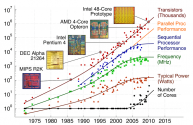Their lossCanada banned Huawei
Processor performance is an extremely multifactorial thing. Multi-node computer system performance is even more multifactorial since communication throughput and latency between processors and nodes become important as well.I'm somewhat confused as to how China was able to continue being competitive in supercomputing, given as that FT article itself writes:
"The local developers of the chips used in the two giant new systems — Tianjin Phytium Information Technology and Shanghai High-Performance Integrated Circuit Design Center — were both on last year’s US sanctions list.
“I think it’s quite impressive that they were able to put in place a system based on their own technology over a very short period of time,” said Dongarra. He added that it was unclear whether the chips were manufactured in mainland China — which is still years behind in matching the world’s most advanced chip fabs — or in Taiwan."
Is there any likelihood at all that the semiconductors themselves were fabbed in the mainland, or is it virtually a given that they were fabbed in Taiwan?
If they were fabbed outside of the mainland, then I would that not present a rather obvious bottleneck that the US would seek to exploit in a rather obvious manner?
Starting around 2005, computer performance in terms of instructions per clock per core, and clock speed has mostly stalled. Since then the main method to increase computer performance is increasing parallelism. This is achieved by more cores, more CPUs and even more nodes. Decreasing the node size used to enable more advanced architectures and higher clock speeds. Now it mostly doesn't and that means unless the difference is extreme you can make up for it with just bigger and more chips. SMIC 12 nm and N+1 (roughly 8 nm equivalent) are more than enough for competing with computers using TSMC's 5 nm node if the Chinese government is willing to pay the price.


